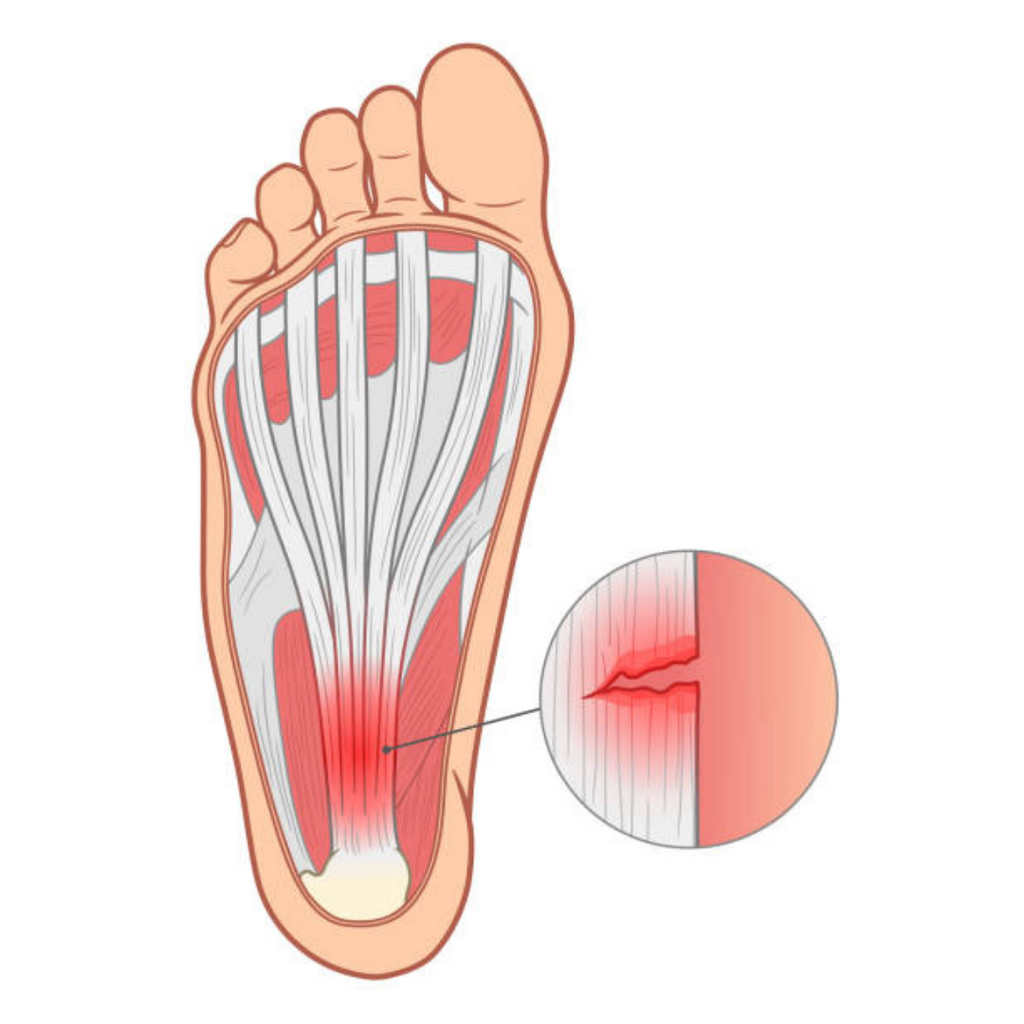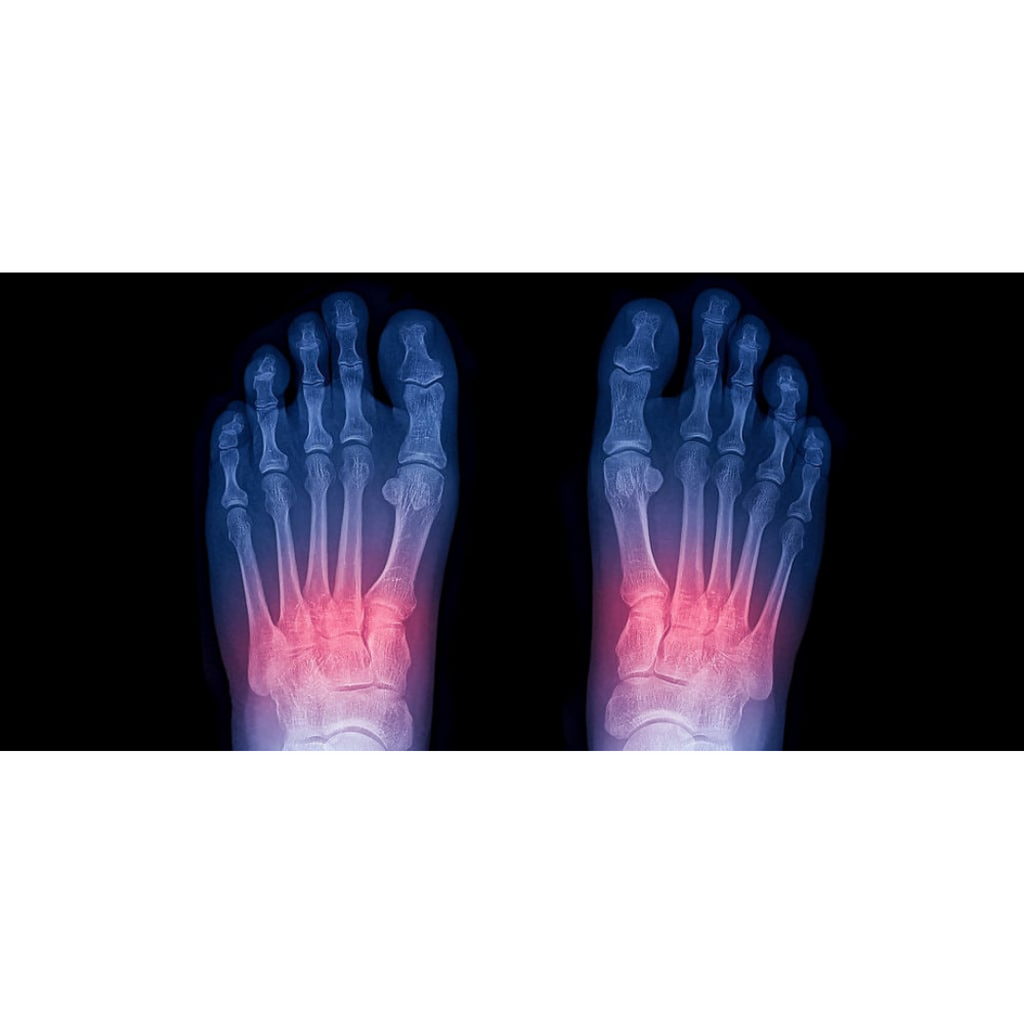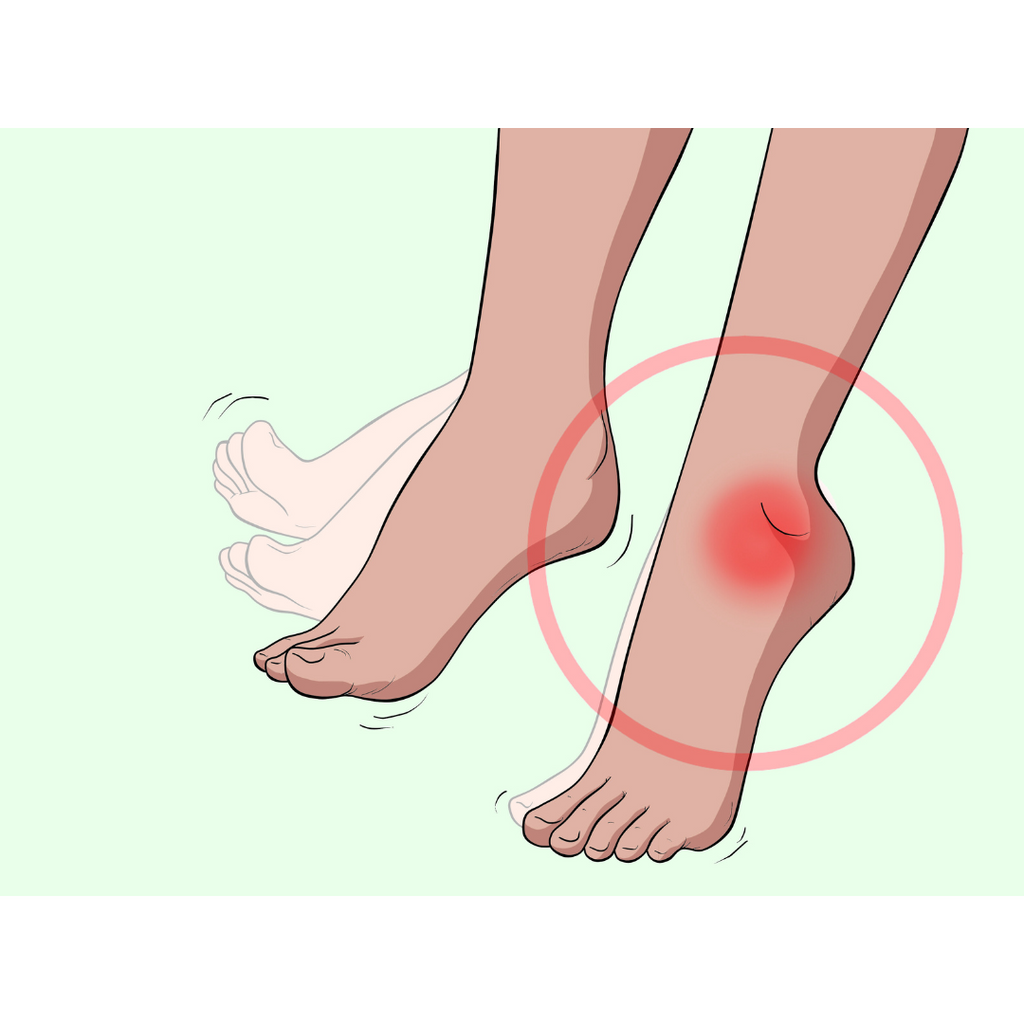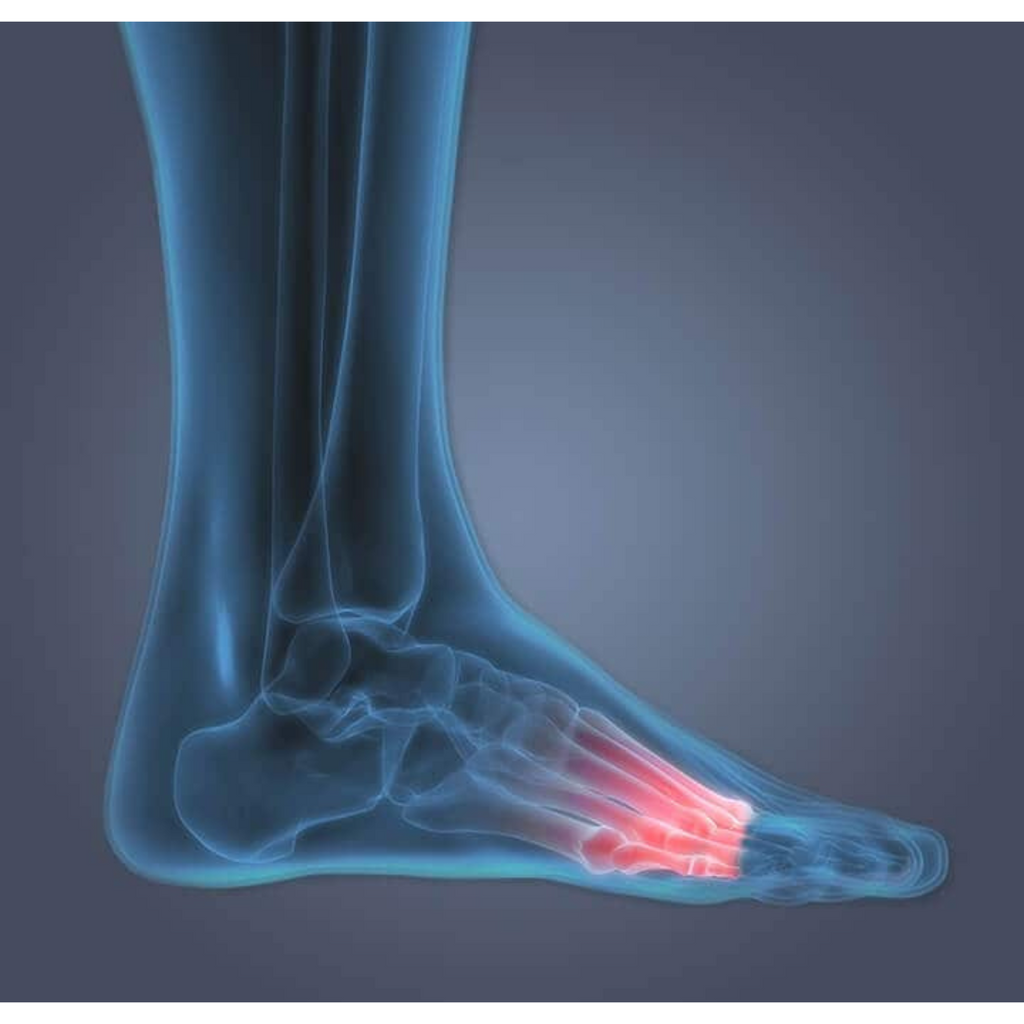The foot and ankle are made up of 26 bones, 33 joints and over 100 tendons, respectively. The calcaneus (medically called the calcaneus) is actually the largest bone in the foot and the first part to hit the ground when walking.
As a result, pain in the heel of your foot can cause more than just discomfort; it can also make simple daily activities like walking difficult. Understanding the causes of heel pain can aid in its prevention and treatment.
What is Heel Pain?
Heel pain is the most common type of foot pain among adults, but it frequently affects only one foot.
The plantar fascia is a band of connective tissue located on the sole of the foot, as is the muscle flexor digitorum brevis, which is responsible for supporting the arch of the foot and allowing us to flex our toes. Most conditions that cause heel pain will also affect these areas of the foot.
Heel pain is a common foot condition, and it is estimated that at least one out of every ten people will experience heel pain at some point in their lives. People who run or jog on a regular basis, as well as adults aged 40 and up, are more likely to suffer from heel pain.
There are numerous treatment and pain relief options for heel pain that can alleviate pain and accelerate patient recovery to within a year.
10 Most Likely Causes of Heel Pain
As many of us are aware, prevention is preferable to cure. We can protect our feet from damage and pain by losing weight, maintaining a healthy weight, eating a balanced diet, and exercising regularly.
Many podiatrists advise wearing supportive footwear that cushions and supports the entire foot. If you have heel pain, it is very likely that one of the following causes is to blame.
1. Plantar Fasciitis
The plantar fascia, a thick band of tissue on the bottom of the foot, can become inflamed and damaged as a result of overuse (such as standing for long periods of time), muscle weakness or tightness, a change in foot biomechanics, or obesity.
The condition will cause pain and tenderness beneath the heel, especially after rest or when climbing stairs. Many patients also have a sensitive spot that becomes more painful when touched. Rest, stretching exercises, special orthotics and insoles, and possibly injections for pain relief are all treatment options.
2. Achilles Tendonitis
One of the most common causes of pain in the back of the heel is this condition. Achilles tendonitis is inflammation of the tendon that connects the calf muscles to the heel bone. It is caused by repetitive strain on the tendon, which can be caused by muscle weakness or tightness, a change in foot biomechanics, or friction caused by bone spurs.

Patients frequently experience pain at the back of their heels, ankle and calf stiffness, and possibly swelling at the back of the heel or above the ankle. Rest, exercises, orthotic shoe insoles for extra foot support, and medication or injections for pain and inflammation relief are all part of the treatment.
3. Bone Spurs
Calcaneal bone spurs can develop beneath or behind the heel bone. They are frequently the source of pain in the foot's heel or the ankle. These bone spurs appear as bony lumps that protrude from the bones and are caused by calcium deposits on the bones.
The condition can be caused by repetitive overuse, such as from sports and running, muscle weakness, or an abnormal position of the heel bone.
Patients frequently experience pain as if they have stepped on something sharp as they stand, which can progress to dull and aching foot pain. Although some patients may not experience any pain, a bony lump around their heel will be visible.
The condition may necessitate some physical therapy in the form of targeted exercises, shoe orthotics such as heel pads, and surgery to remove the bone spur.
4. Heel Fractures
Heel pain can be caused by a single or multiple fractures or breaks in the heel bone. A heel fracture can occur when an individual repeatedly overloads the heel, such as by running or jumping excessively, which can lead to stress fractures, or by falling from a certain height and landing feet first.
Patients will experience pain that worsens when pressure is applied to the foot, as well as significant swelling around the affected area. A fractured heel and the pain it causes can cause you to walk differently.
Treatment should be sought immediately, and medication for heel pain relief can be administered. Protecting, resting, compressing, icing, and elevating the affected area are all effective ways to treat heel fractures. If the fracture is severe, surgery may be required.
5. Bursitis
Retrocalcaneal bursitis is an inflammation of the bursa, a small fluid-filled sac located between the heel bone and the Achilles tendon. Inflammation can be caused by repetitive friction on the bursa, which is commonly caused by muscle tightness or weakness or a sudden increase in activity level.
Symptoms include heel pain while walking, running, or standing on tiptoes. The affected area may be tender to the touch, as well as swollen, red, and warm. Rest, ice therapy, pain relievers, and calf muscle exercises are the mainstays of treatment.
6. Os Trigonum Syndrome
This condition is more common in athletes and ballet dancers. It is caused by a small bone becoming stuck in the ankle joint, causing irritation of the soft tissues at the back of the heel. Os trigonum syndrome can be caused by repeatedly pointing the foot downwards or by an ankle injury.
This condition is typically characterized by a deep and dull pain in the heel of the foot that subsides with rest. As a result, depending on the severity of the condition, treatment may include rest, ice, steroid injections, and possibly surgery.
7. Tarsal Tunnel Syndrome
The tibial nerve, which runs through the tarsal tunnel on the inside of the ankle, can become compressed if the tunnel's space is reduced. Swelling, cysts, arthritis, or even benign tumors can cause this.
Patients will experience pain in the heel of their foot that spreads up to the calf. Sometimes numbness or pins and needles sensations occur, which are worse at night.
Rest, anti-inflammatory medications, exercises, and shoe orthotics are used to treat tarsal tunnel syndrome. If the pain is excruciating, steroid injections or surgery may be recommended.
8. Severs Disease
This disease is a common cause of heel pain in children. Severs disease occurs when the growth plate of the heel becomes inflamed. It can be caused by a growth spurt, prolonged standing, or overuse from participating in strenuous sporting activities.
Symptoms include pain behind or beneath the heel, inflammation, and pain when walking. Patients also report that their symptoms worsen with activity and that they are affected in both feet at the same time.
Podiatrists recommend strengthening and stretching exercises, as well as plenty of rest. When orthotics and medication are used together, symptoms can be relieved within two months.
9. Fat Pad Atrophy
This is when the layer of fat beneath the heel bone (and ball of the foot) begins to deteriorate as a result of excessive strain. This condition is more common in women who have worn high heels for a long time.
A persistent foot ache, especially when walking or standing for an extended period of time, is one of the symptoms. Some patients may develop calluses on the balls of their feet and experience a small rock sensation in the bottom of their foot.
Wearing custom supportive orthotics and engaging in low impact exercises that put less strain on the feet can help manage the condition.
10. Rheumatoid Arthritis
The most common type of arthritis is rheumatoid arthritis. Foot problems are reported by up to 90% of patients with this condition.
This condition can cause inflammation in the foot joints, resulting in pain around the balls of the feet, and it can also contribute to the development of other conditions such as bursitis.
Patients frequently complain that the affected areas of their feet are sore, inflamed, and warm to the touch. Treatment consists of relieving pain by reducing pressure on the heel of the foot with specialized orthotics and taking anti-inflammatory medications.
Products that Help Reduce Heel Pain
Final Word | Causes of Heel Pain
Individuals suffering from heel pain may alter their walking pattern in an attempt to relieve pressure on the heel of the foot; however, this misalignment of the body can result in pain and pressure in the knees, hips, and back.
Because the causes of heel pain can vary greatly, it is strongly advised that you consult with a specialized podiatrist for a professional diagnosis and treatment.






